Microsoft Surface Duo offers a slick two-screen experience
Two screens: twice as good as one? Microsoft Surface Duo says so
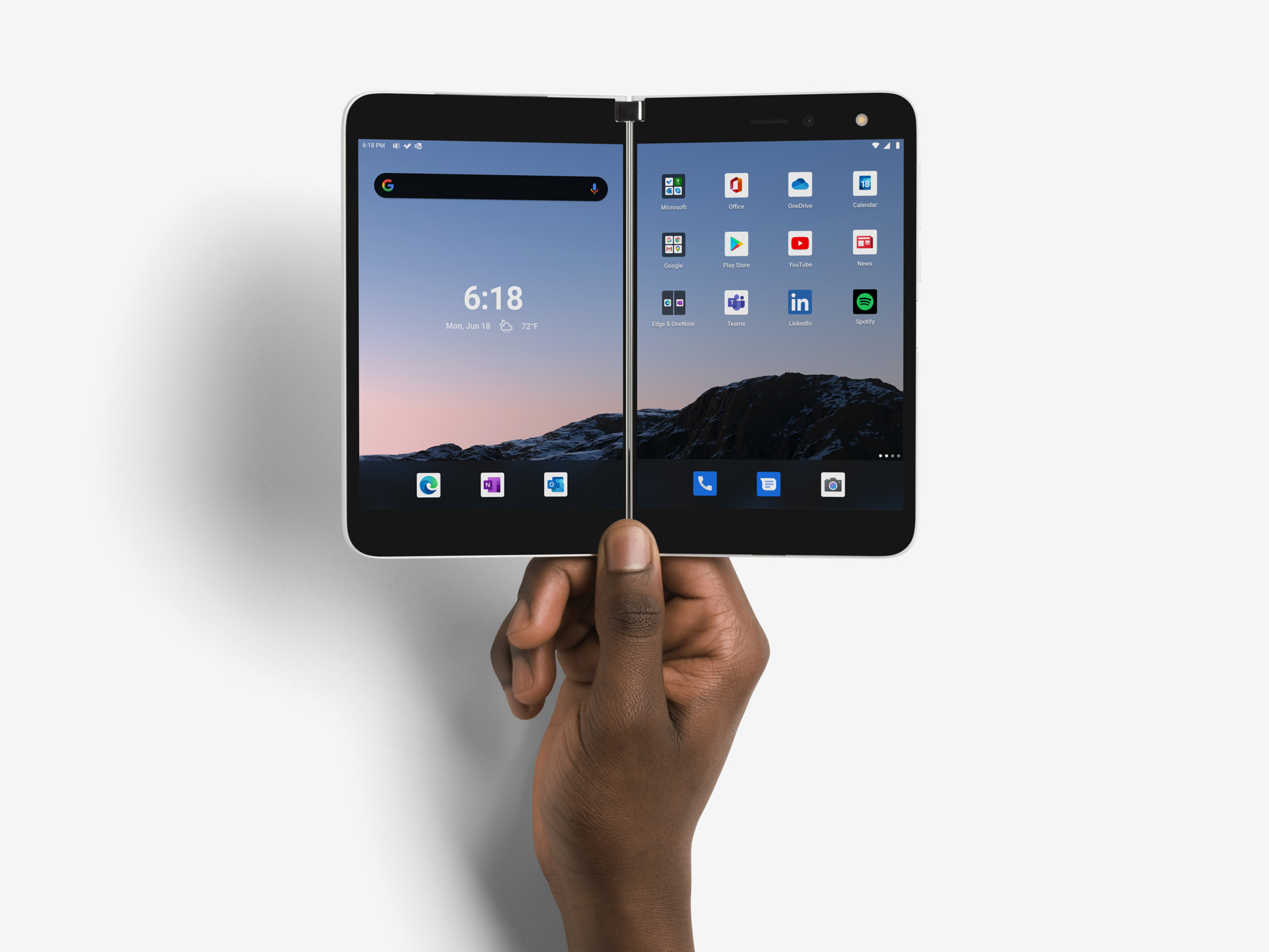
We’re all re-thinking the way we work, where we work and how we work. Microsoft’s new Surface Duo is a premium mobile product with a very specific pitch; people who want to get things done. To that end, the Duo sports twin 5.6” screens and is designed to be used in a myriad number of ways. ‘Things are getting faster and better – that’s the nature of technology,’ says Tim Escolin, Microsoft’s director of industrial design. ‘With the Duo, we wanted to get more productivity from a two-screen device. However, we didn’t want it to feel like two phones combined. Instead, we took inspiration from a physical notebook – like a Moleskine – something you carry around and dip into.’
There’s an old visual joke about the inevitable outcome of the safety razor arms race. First one manufacturer adds a second blade to their cartridge – ‘for a smoother cut’ – then their competitors follow suit by adding a third. No prizes for guessing where this is going; according to Wikipedia, a South Korean company currently manufactures a seven-blade shaving cartridge. At one point, phones looked set to go down a similar path. Twin screen phones were briefly all the rage back in the flip phone era when a closed clamshell device made every call a surprise. However, folding and rolling displays are becoming more practical by the month. Samsung is already into the second iteration of its Galaxy Fold, Huawei’s Mate X2 is also around the corner, as is the FlexPai 2 from US-based Royole. Motorola’s Razr 5G rebooted the classic flip format with a folding screen, and there’s even talk of a folding iPhone in the years to come. Nevertheless, the consumer jury is still deliberating the merits and endurance of a fold point which is integrated with the actual display.
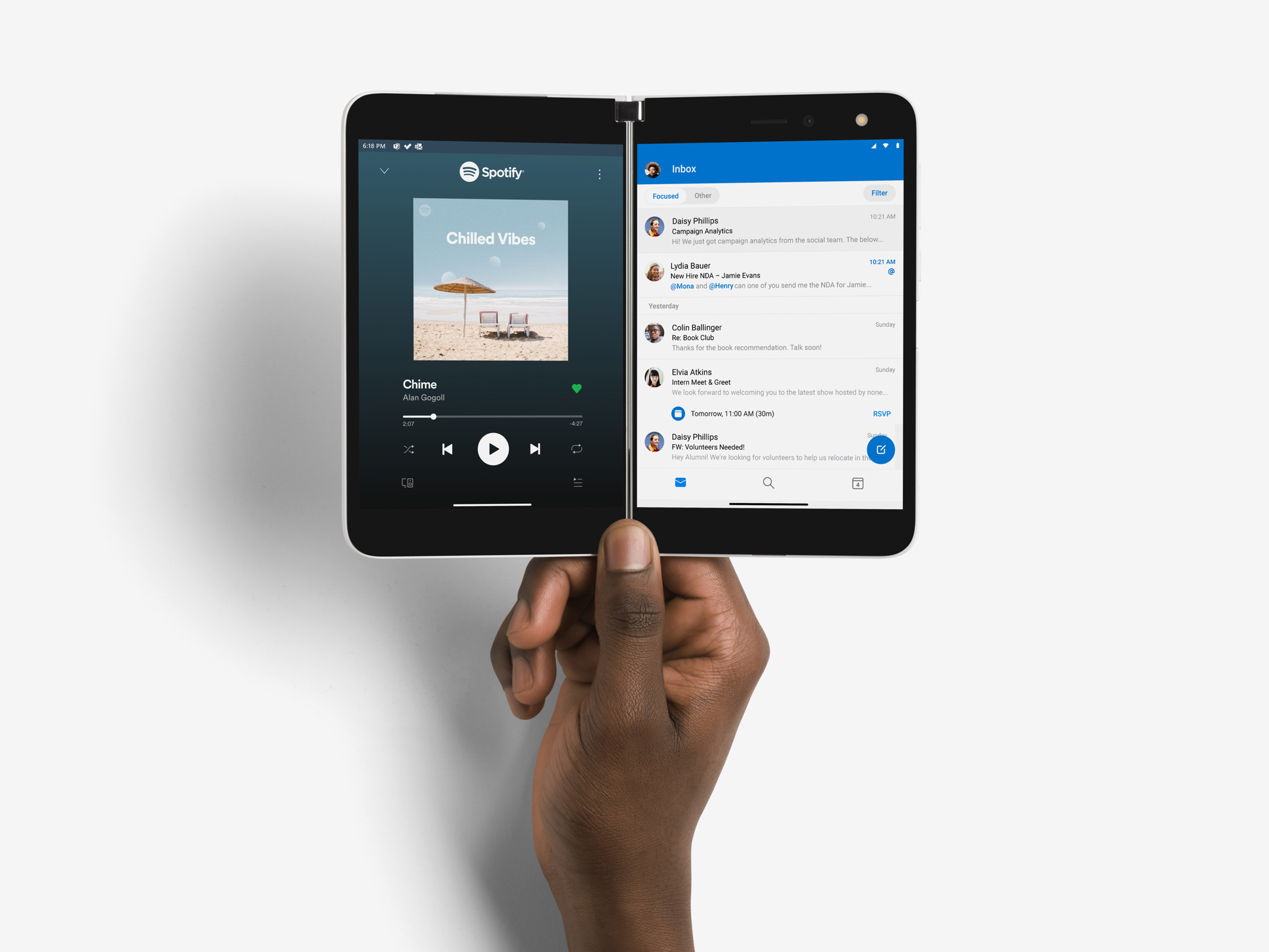
Microsoft's Surface Duo lets you do two things at once without compromise
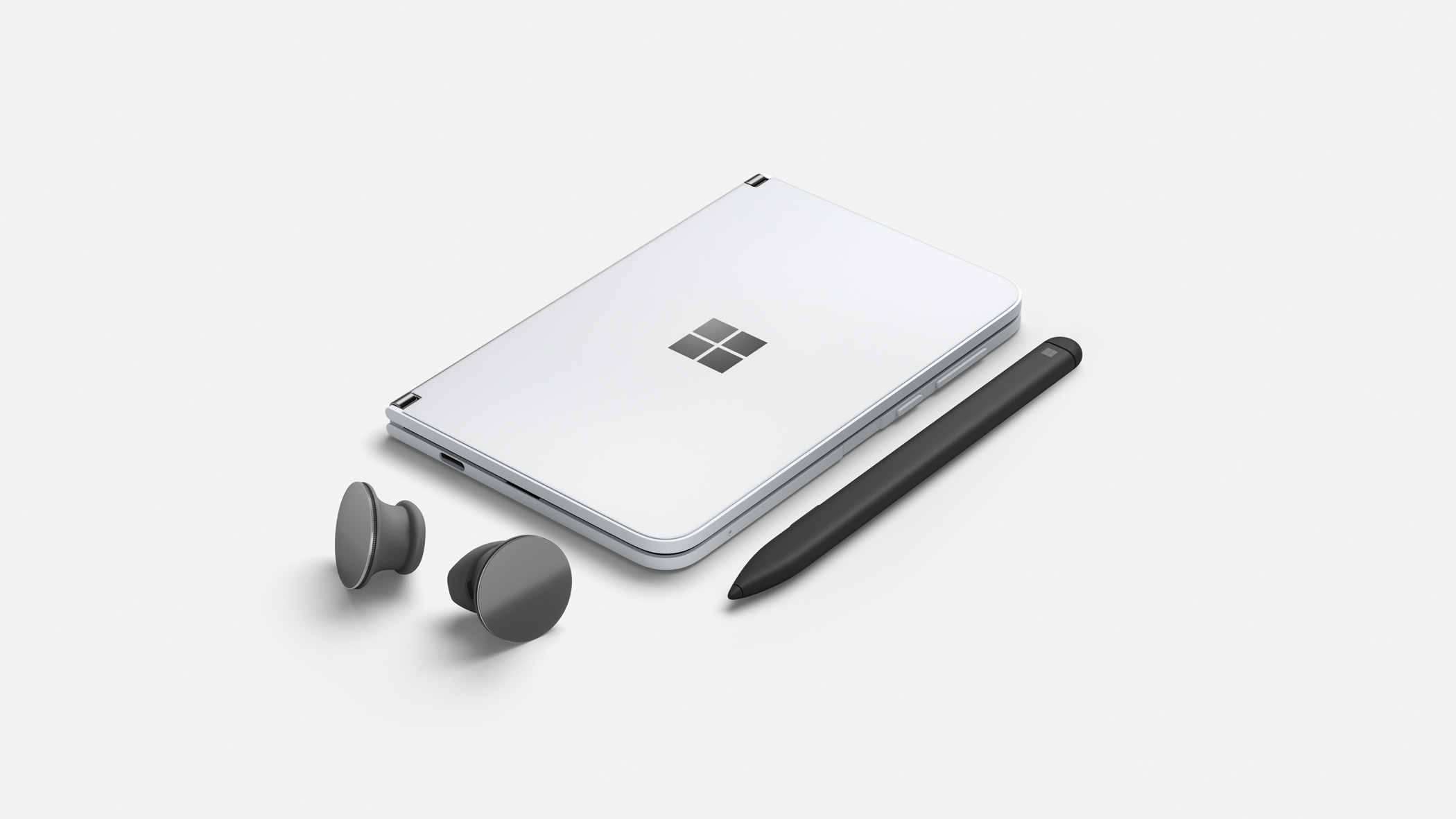
Microsoft Surface Duo with accessories, Surface Pen and Surface Earbuds
Microsoft hope to sidestep these concerns with the Surface Duo with its independent twin displays. The company’s industrial design team spent a long time exploring the form factor. Scott Schenone, Principal Design Manager in Microsoft’s Surface mobile team, explains how the 360-degree hinge was a crucial part of the design. ‘To start with we just taped two pieces of waterjet cut aluminium together to explore how they felt,’ he says. The device has a welcome solidity that only a mechanical hinge can create. The 360-degree hinge can stop at any angle, allowing the device to be used like a mini laptop, propped up like a tent or folded back on itself to resemble a conventional device. Inside, the components have been strategically located within the device, each ‘leaf’ of which is substantially thinner than a regular phone, to create better balance in the hand. ‘The weight is spread around so you have a good centre of gravity,’ says Escolin.
For the Surface designers, the blend of hardware and software has been the biggest challenge, working hand in glove with Microsoft’s 365 team, to ensure the Duo has distinct user benefits, even though the operating system is based on a stock Android build. For apps like Outlook, for example, you can compose in one pane and search the message list in the other. Or you can have two browsers windows open simultaneously or simply watch a video while you work. Once you get the hang of the UI you can ‘fling’ apps between the panels or swap the dominant screen. The form factor facilitates and even encourages a new approach. ‘It’s easy to make comparisons between the duo and a book. You start on one screen and move to the other, then move back and forth depending on what you’re doing,’ says Escolin. ‘We even went as far as measuring the average muscle strength in people’s thumbs,’ says Scott, just so we could ensure that it wasn’t too much of a stretch to use it when full open.’
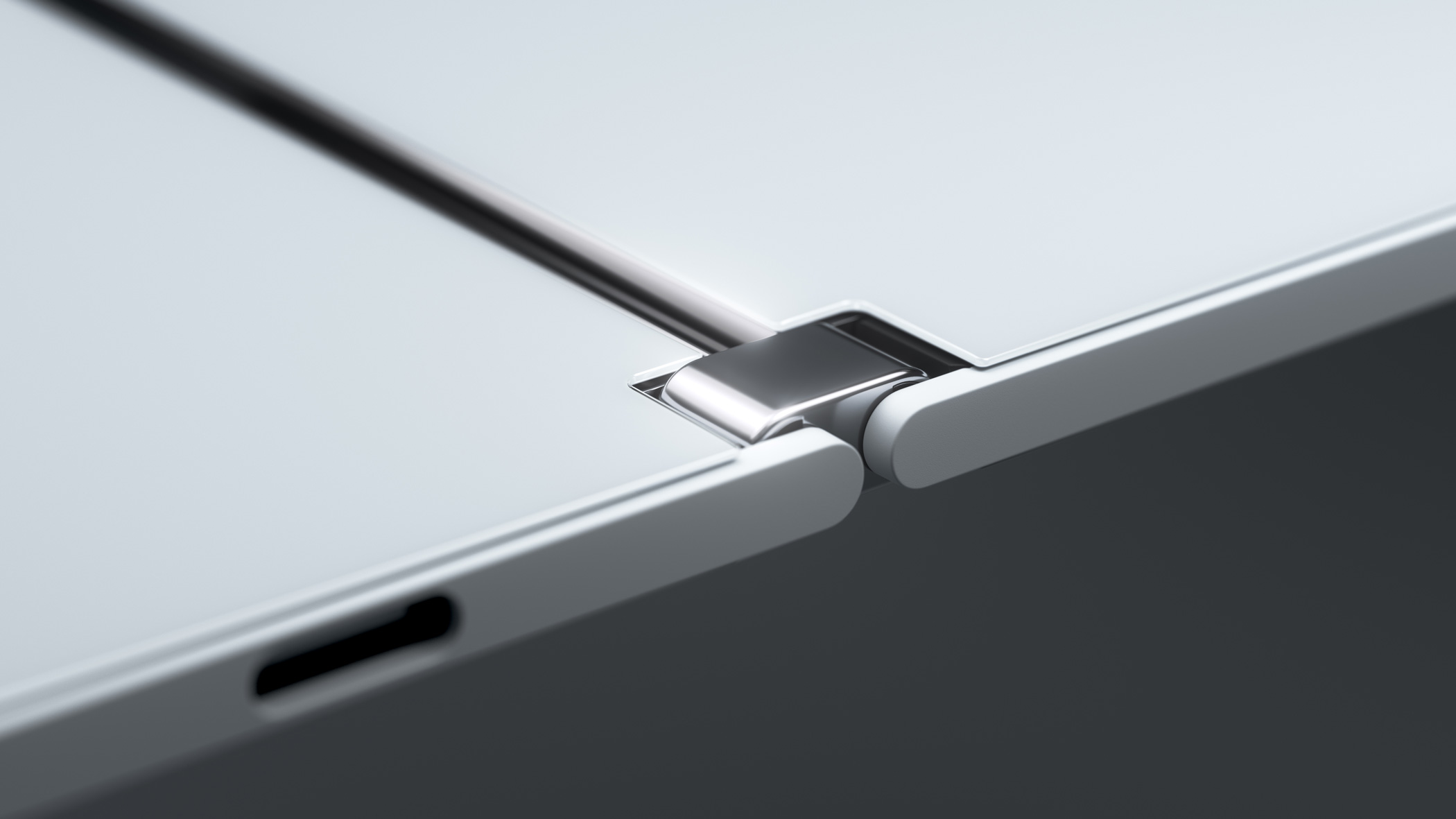
Microsoft Surface Duo's 360-degree hinge in detail
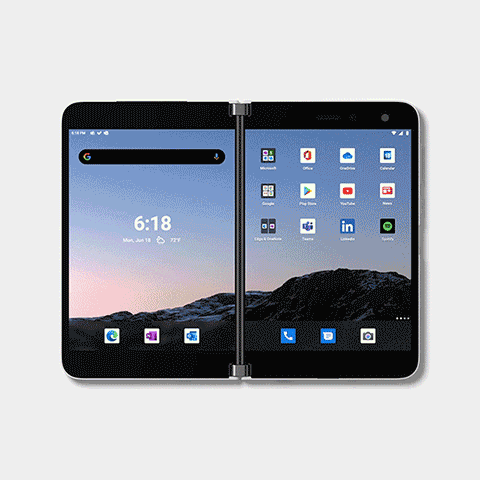
INFORMATION
Microsoft Surface Duo, from £1,349 (128GB version).
Receive our daily digest of inspiration, escapism and design stories from around the world direct to your inbox.
Jonathan Bell has written for Wallpaper* magazine since 1999, covering everything from architecture and transport design to books, tech and graphic design. He is now the magazine’s Transport and Technology Editor. Jonathan has written and edited 15 books, including Concept Car Design, 21st Century House, and The New Modern House. He is also the host of Wallpaper’s first podcast.
-
 The Bombardier Global 8000 flies faster and higher to make the most of your time in the air
The Bombardier Global 8000 flies faster and higher to make the most of your time in the airA wellness machine with wings: Bombardier’s new Global 8000 isn’t quite a spa in the sky, but the Canadian manufacturer reckons its flagship business jet will give your health a boost
-
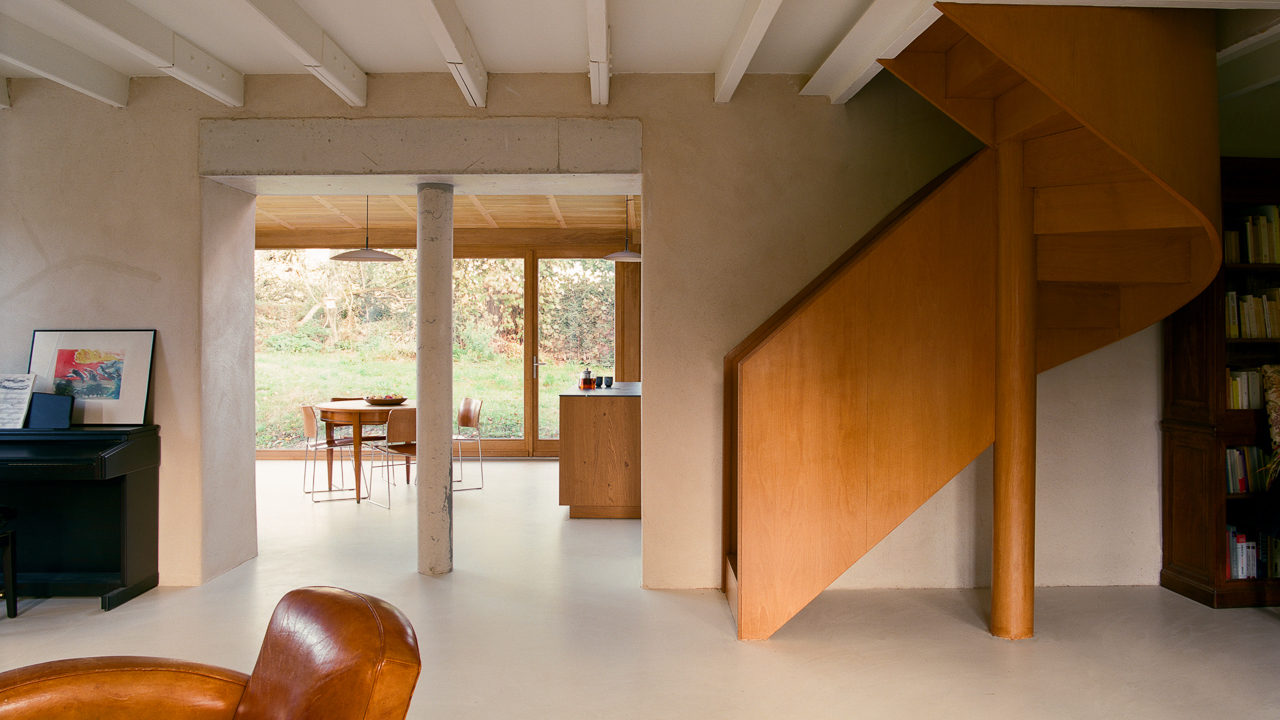 A former fisherman’s cottage in Brittany is transformed by a new timber extension
A former fisherman’s cottage in Brittany is transformed by a new timber extensionParis-based architects A-platz have woven new elements into the stone fabric of this traditional Breton cottage
-
 New York's members-only boom shows no sign of stopping – and it's about to get even more niche
New York's members-only boom shows no sign of stopping – and it's about to get even more nicheFrom bathing clubs to listening bars, gatekeeping is back in a big way. Here's what's driving the wave of exclusivity
-
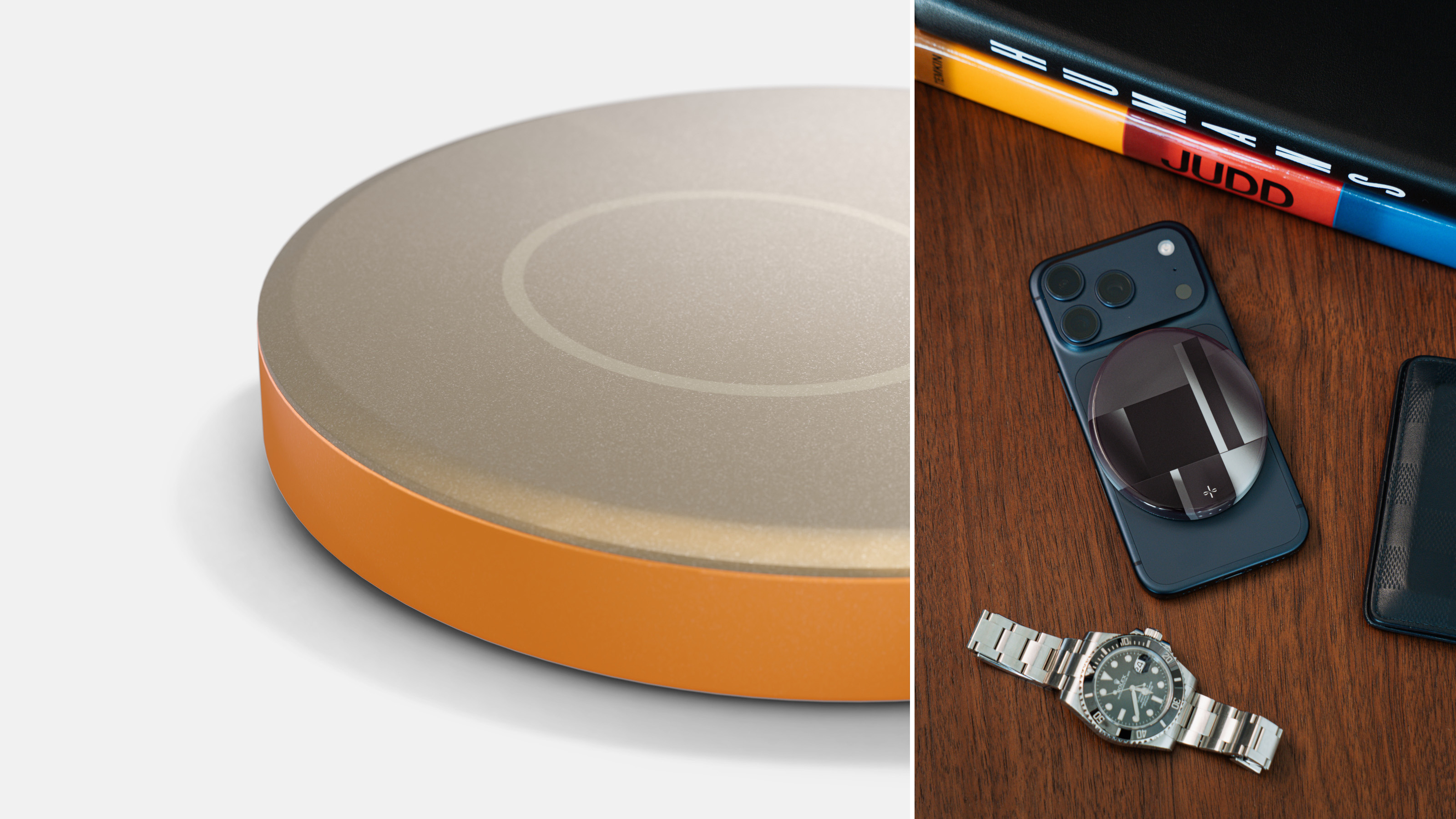 Inspired by a pebble, the stylish new Alma charger provides pocketable convenience
Inspired by a pebble, the stylish new Alma charger provides pocketable convenienceWhat if technology could quietly allay anxiety and not cause it? That’s the pitch behind new luxury accessories company Addition, starting with its new Alma wireless charger
-
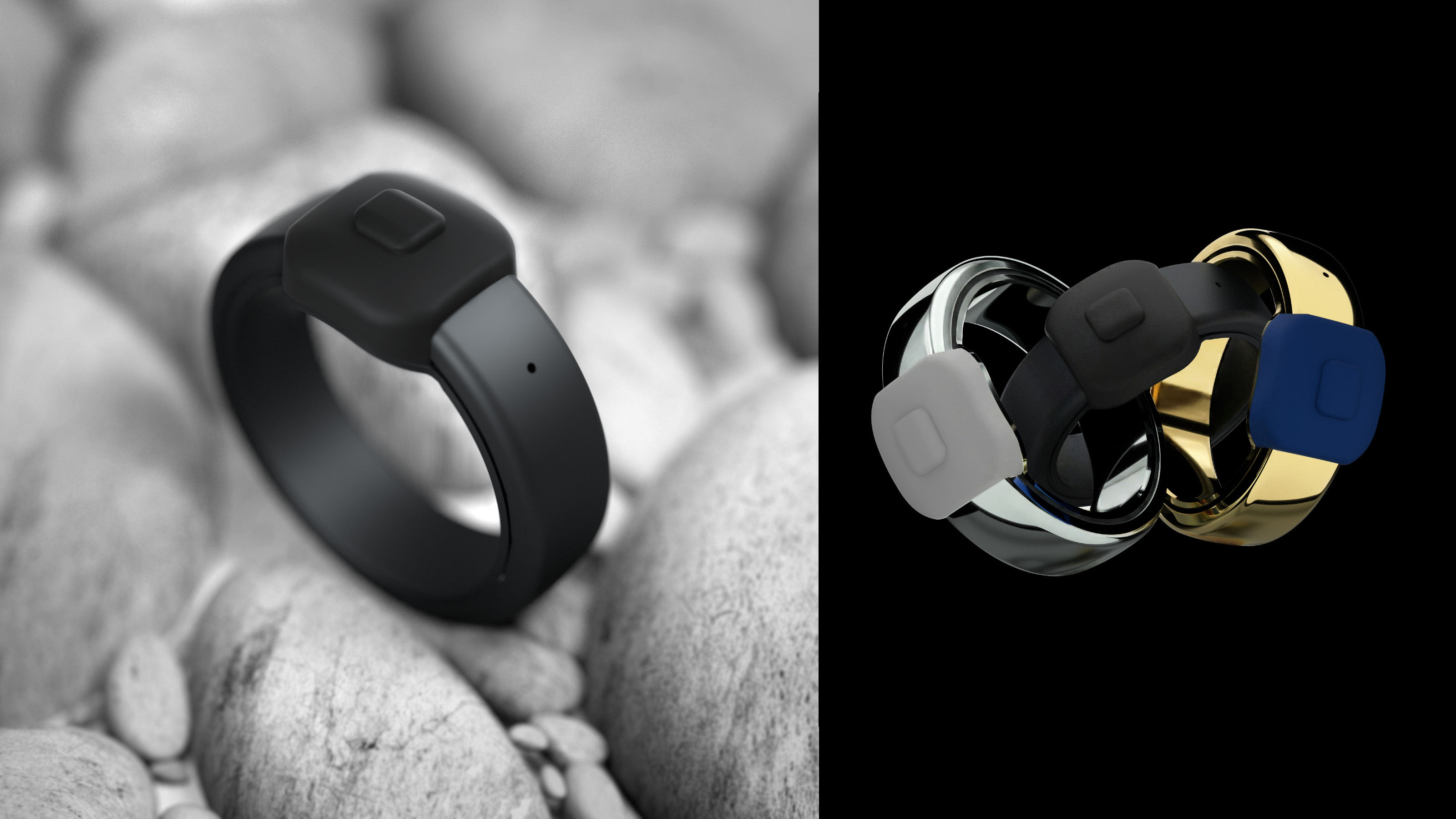 The ring’s the thing as Pebble launches a discreet device for memo-taking, Index Ring 01
The ring’s the thing as Pebble launches a discreet device for memo-taking, Index Ring 01A tiny device with a singular purpose but limitless applications, the Pebble Index 01 is a customisable smart ring for turning mental notes into text
-
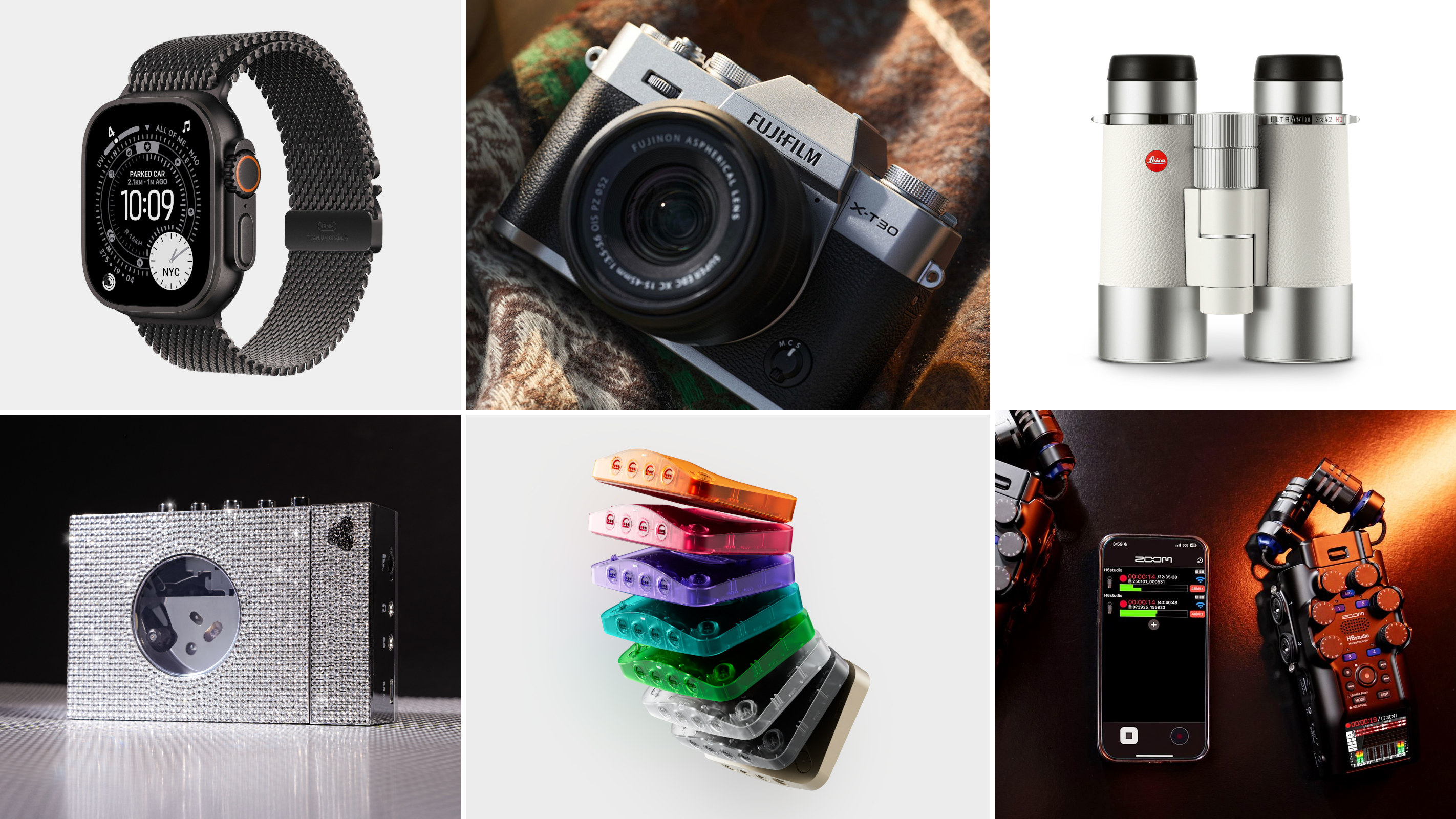 Tech gift ideas: Wallpaper’s Jonathan Bell lists 12 devices to desire this festive season
Tech gift ideas: Wallpaper’s Jonathan Bell lists 12 devices to desire this festive seasonTechnology editor Jonathan Bell delves into the best new releases and most giftable gadgets from 2025, offering up personal favourites as well as a few big hints
-
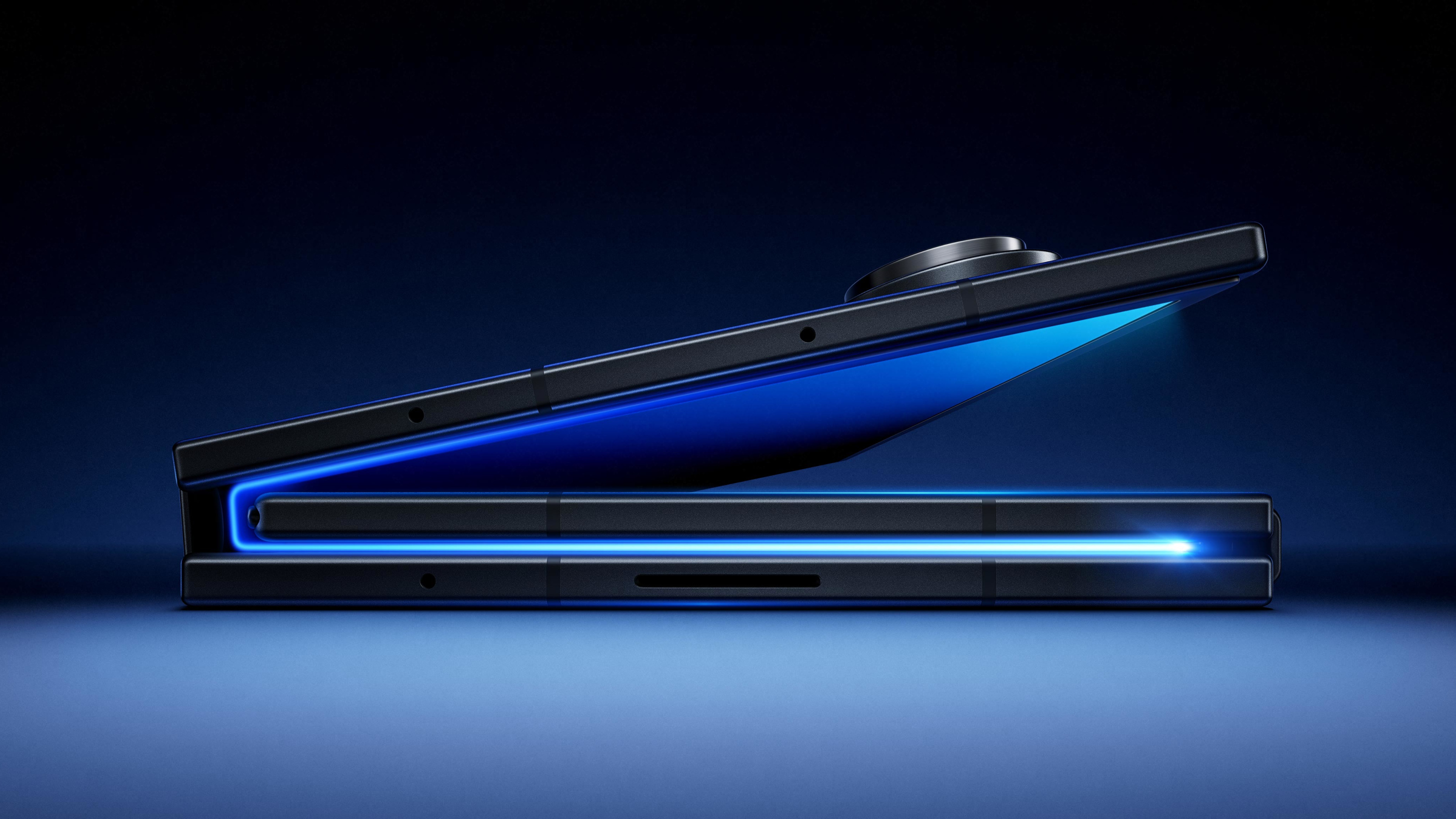 Samsung Galaxy Z TriFold is a pocket tablet that takes folding screens to new extremes
Samsung Galaxy Z TriFold is a pocket tablet that takes folding screens to new extremesSamsung has announced its newest flagship device, the Galaxy Z TriFold. Featuring three folding screens, this ultimate smartphone can transform into a ten-inch tablet
-
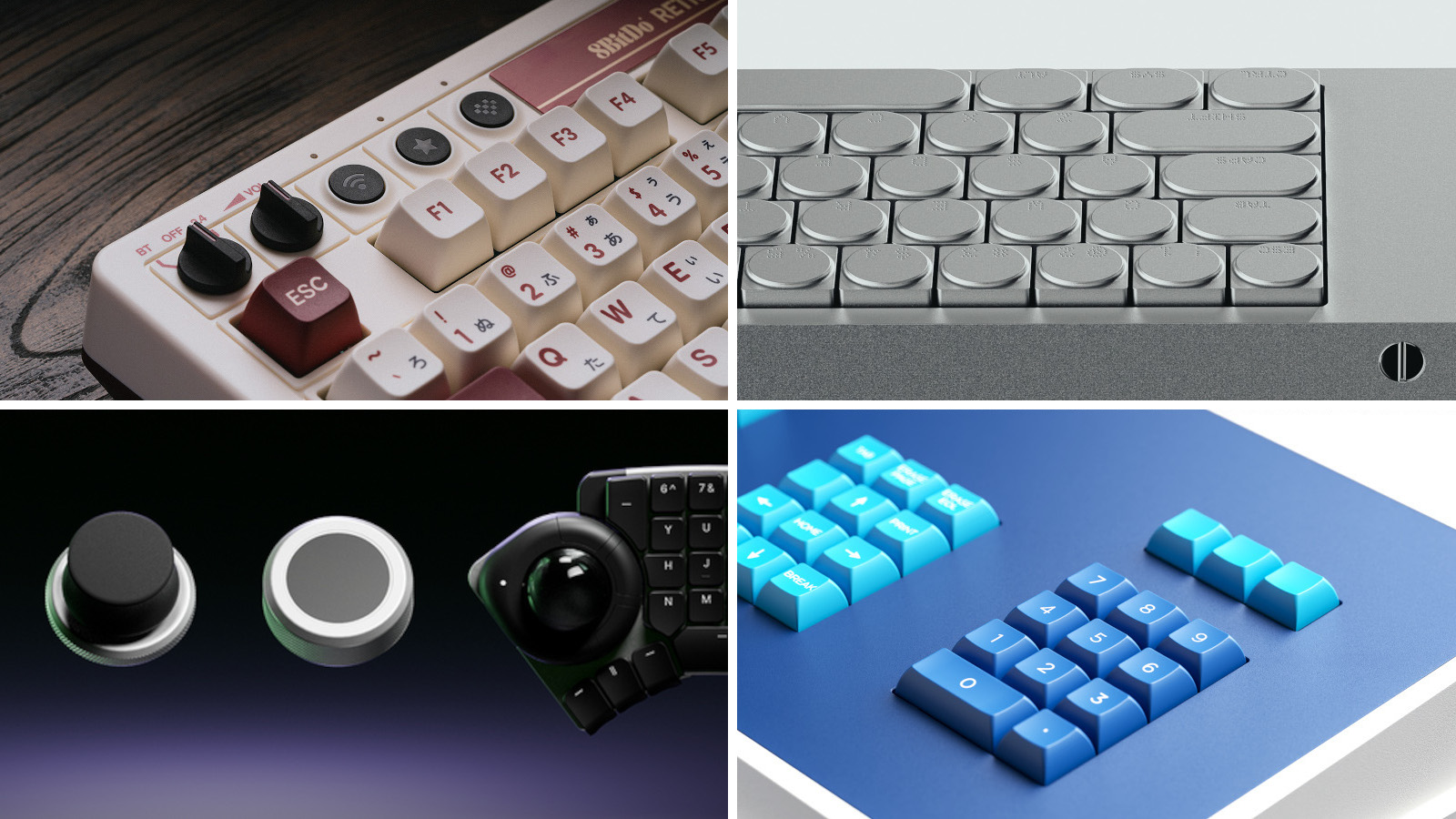 Four new keyboards are fresh and functional desktop companions
Four new keyboards are fresh and functional desktop companionsMechanical keyboards are all the rage, bringing with them new ways of personalising your desktop. We’ve found four devices that hark back to the early days of computing
-
 Hunker down in a perfectly equipped work-from-home hub this winter
Hunker down in a perfectly equipped work-from-home hub this winterIf your WFH set-up needs an upgrade, or if you need to kit out a new small business from scratch, we’ve got you covered
-
 New Leica Q3 Monochrom camera sees the world in black and white
New Leica Q3 Monochrom camera sees the world in black and whiteDefined by its crisp 60MP monochrome sensor, the Leica Q3 Monochrom is a camera designed for those who want to focus only on light, shadow and form
-
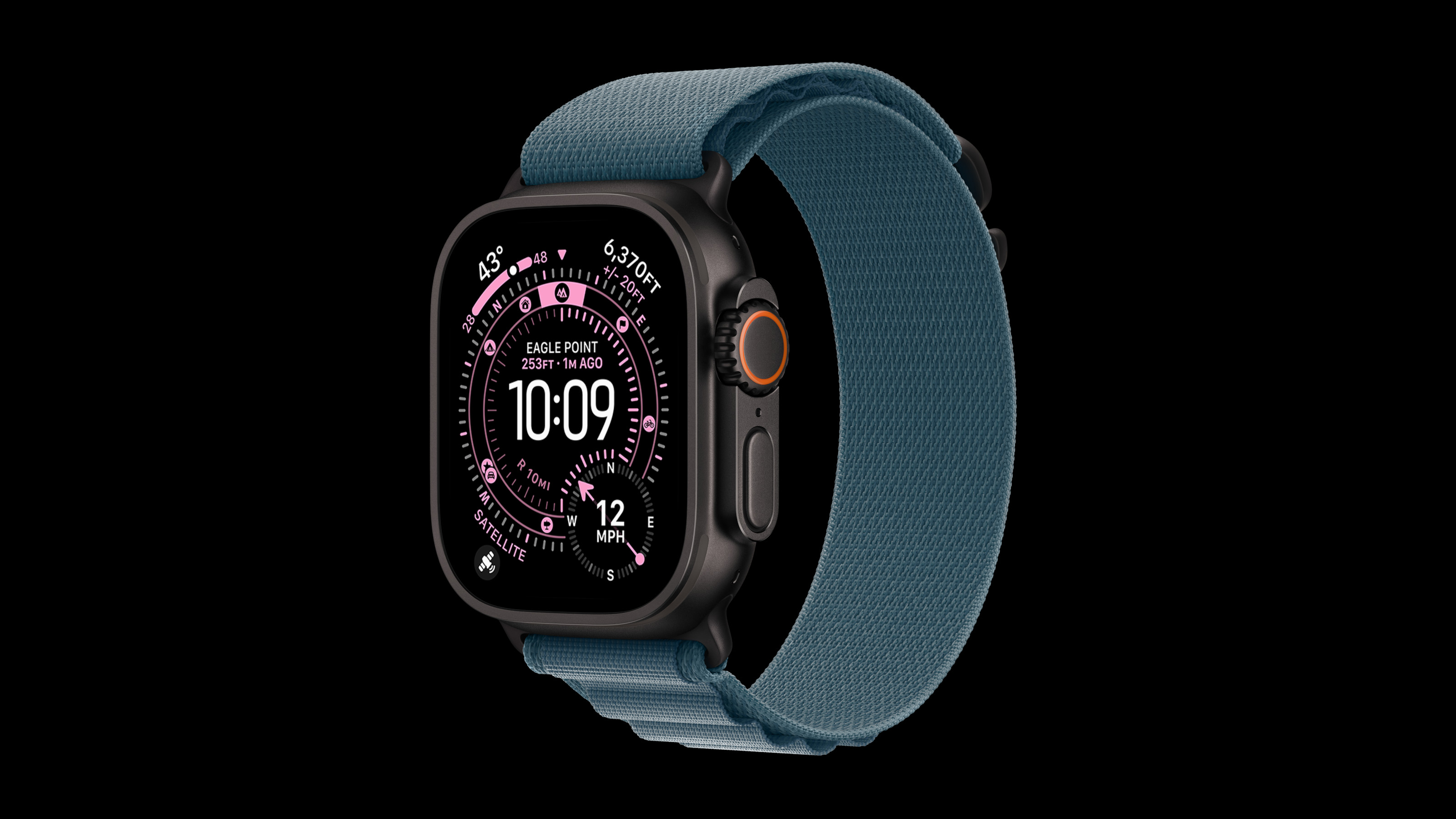 Apple Watch Ultra 3 has innovation at its heart – a 3D-printed titanium case
Apple Watch Ultra 3 has innovation at its heart – a 3D-printed titanium caseWe delve into Apple’s pioneering use of 3D-printed metal, and how it ties in with the company’s path to carbon neutrality